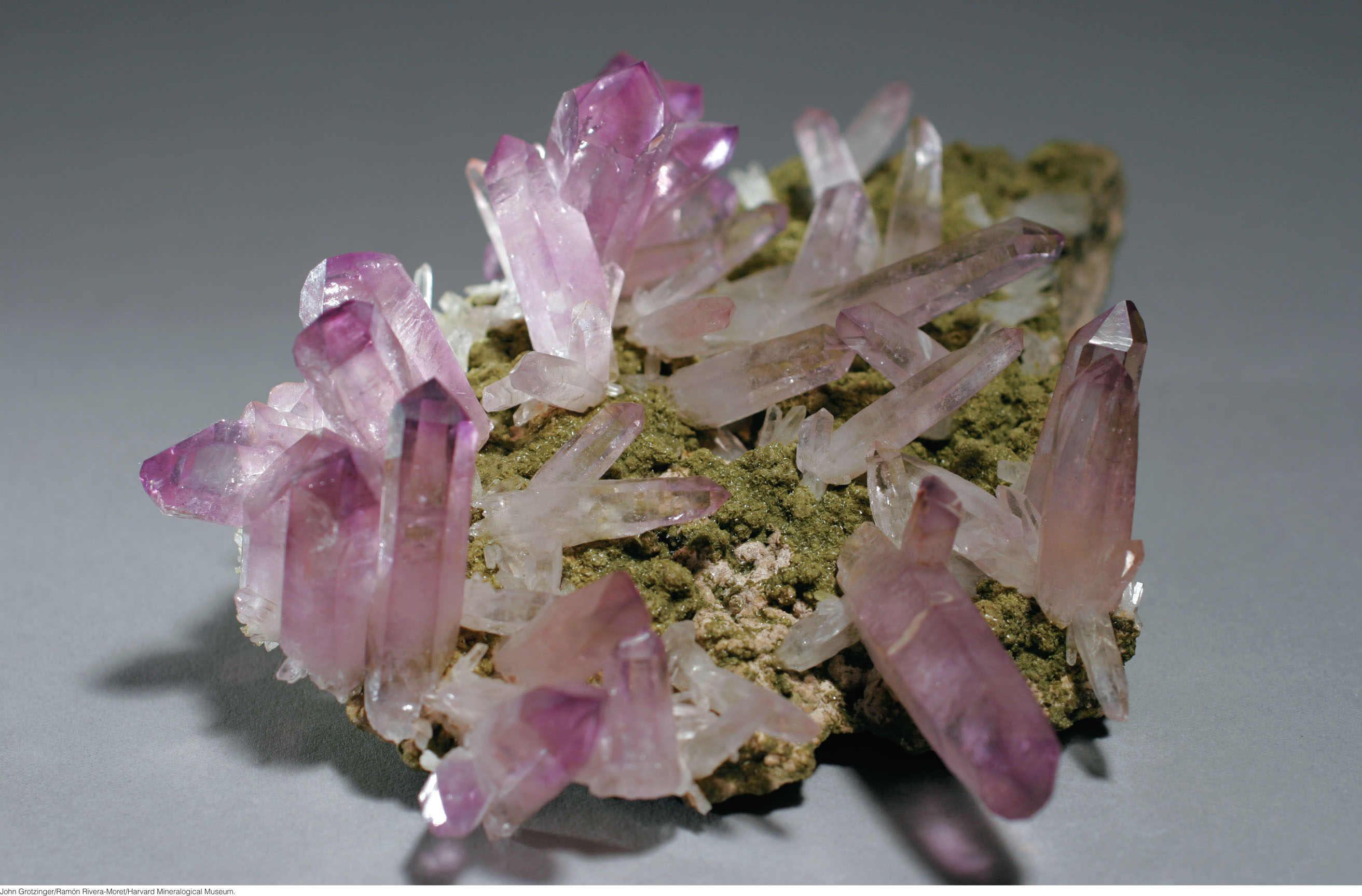56

EARTH MATERIALS: MINERALS AND ROCKS
 What Are Minerals?
What Are Minerals? The Structure of Matter
The Structure of Matter The Formation of Minerals
The Formation of Minerals Classes of Rock-Forming Minerals
Classes of Rock-Forming Minerals Physical Properties of Minerals
Physical Properties of Minerals What Are Rocks?
What Are Rocks? The Rock Cycle: Interactions Between the Plate Tectonic and Climate Systems
The Rock Cycle: Interactions Between the Plate Tectonic and Climate Systems Concentrations of Valuable Mineral Resources
Concentrations of Valuable Mineral Resources
57
IN CHAPTER 2, WE saw how the plate tectonic system gives rise to Earth’s large-scale structure and dynamics, but we touched only briefly on the wide variety of materials that appear in different plate tectonic settings. In this chapter, we focus on those materials: minerals and rocks. Minerals are the building blocks of rocks, which are, in turn, the records of geologic history. Rocks and minerals help determine the structure of Earth, much as concrete, steel, and plastic determine the structure, design, and architecture of large buildings.
To tell Earth’s story, geologists often adopt a “Sherlock Holmes” approach: they use current evidence to deduce the processes and events that occurred in the past at some particular place. The kinds of minerals found in volcanic rocks, for example, provide evidence of eruptions that brought molten rock to Earth’s surface, while the minerals in granite reveal that it crystallized deep in the crust under the very high temperatures and pressures produced when two continents collide. Understanding the geology of a region also allows us to make informed guesses about where undiscovered deposits of economically important mineral resources might lie.
This chapter begins with a description of minerals—what they are, how they form, and how they can be identified. We then turn our attention to the major groups of rocks formed from these minerals and the geologic environments in which they form.
58